WACSSO’s history is an important part of the story of public education in Western Australia and the evolving attitudes of parents and government departments over time. We are also an integral part of the history of over 650 P&C Associations.
Our minutes are an intimate record of one of the earliest examples of Western Australian organisations with female leadership. The WACSSO Minute Books from 1921-2006 have now been digitally scanned. WACSSO would like to acknowledge the WA History Foundation, who provided the grant so that this piece of Western Australian history is preserved and accessible to all those with an interest in public education in this State.
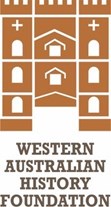
-
2021
Partnering with Parents for 100 Years
Centenary celebrations saw WACSSO delve back in time with a themed Annual Conference and a year-long schedule of P&C focused initiatives and historical throwbacks.
-
2020
The first virtual WACSSO Conference
COVID-19 saw WACSSO’s strengths of agility, collaboration, skill and passion come into play. State Council, supported by dedicated staff, worked to ensure the concerns of P&Cs and parents formed part of the response effort to keep education open and schools safe.
Virtual became reality as WACSSO held its first online Annual Conference connecting more than 100 delegates from 83 P&Cs associations across WA via Zoom. This was the first time since the second World War that Conference was not a face-to-face event. -
2019
The Launch of P&C Day WA
P&C Day WA first launched on July 26, 2019. The idea was that P&C Day would occur annually with the purpose of celebrating P&Cs throughout the state and giving thanks for all their amazing contributions.
The first P&C Day WA was very successful, with many schools and P&Cs holding events to celebrate all things P&Cs.
-
2017
A refreshed WACSSO
A re-brand process, which was a combined State Council, staff and stakeholder effort, resulted in the adoption of a refreshed identity and a renewed focus for WACSSO.
We debuted the new brand and our exciting new logo at WACSSO Annual Conference in August.
-
2015
Electorates revised again
A review of WACSSO in 2015 recommended a number of changes to ensure the viability and effective running of the organisation into the future. This Included a plan to revise the number of electorates down to 20 by 2020.
-
2011
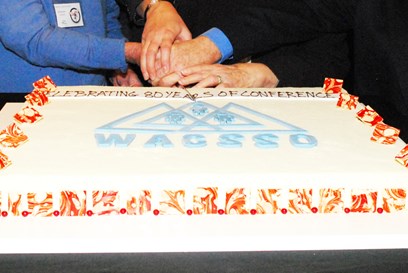
90 years of operation
A year of celebration for WACSSO and P&Cs across the state. At the 2011 Annual Conference, WACSSO celebrated its 90th year of operation. David Forrester, WACSSO Life Member, spoke on the history of education and the important role of WACSSO. Mr Forrester, along with President, Kylie Catto, and Life Member, Betty Green, cut the cake in front of over 220 P&C delegates from around the state. Robert Fry, the longest serving President, was also awarded Life Membership for his dedication and commitment to the organisation.
-
1988
More changes at WACSSO
In 1988, we saw another major reorganisation with the electorate boundaries being varied to coincide with the 29 Ministry of Education school districts. A similar reorganisation occurred in 1997 when the district boundaries were changed by the Education Department.
-
1979
WACSSO logo designed
A competition was conducted to design a logo for WACSSO. From the 40 entries submitted, four tied for first place. From these designs, the logo of three people in three triangles was devised. The interlocking triangles represent Students, Parents and Teachers co-operating in the learning process. The stylised figures also represent Students, Parents and Teachers; while WACSSO, the State Body representing all Parents and Citizens' Associations, is the complementary organisation, helping to provide learning opportunities and ensuring that each student has an equal opportunity to receive the best possible education. The logo has been re-designed over the years to ensure it remains modern and in touch with today’s generation.
-
1979
Constitution amended
At the 1979 Annual Conference, the Constitution was amended to provide for a "Special Schools" electorate. Subsequently, a Councillor was elected to fill this vacancy.
-
1978
Electoral boundaries changed
In 1978 the electoral boundaries were changed, reducing the numbers of possible Councillors to 41.
-
1974
Management changes
In January 1974, 43 Councillors took office. Thus, there was a departure from a conference-elected Committee of Management to a Council elected by Associations to manage the affairs of the organisation.
-
1973
WACSSO is born
At the 1973 Conference, two significant changes to the constitution lead to important changes in the organisation.
As a result of affiliation with ACSSO, it was deemed at the time that there was a greater need for uniformity between the Federation and the national body. In line with this thinking, a change in name to "The Western Australian Council of State School Organisations" was made.
The second significant change was the phasing out of the Committee of Management and the establishment of a State Council. The State Council was to consist of Councillors elected by Associations based on one councillor for each State Legislative Assembly seat. It was possible then for 51 Councillors to be elected to the State Council.
-
1971
The Federation’s Golden Jubilee
During the Federation’s 50th year, it reiterated to affiliates the important role of Associations in utilising the channels of Government to contribute to the common good. It elected March 30 as a ‘National letter writing day,’ requesting citizens to send letters to State and Federal members of parliament protesting against the deficiencies in the various systems of education. The Federation requested a national inquiry into education in Australia.
-
1967
Expanding school canteens
School canteens continued to gain popularity and a ‘model plan’ for primary school canteens was produced by Perth Technical College architecture students as part of a design project for the Federation. The Education Department’s Technical Education Division announced a 12-month certificate course on School Canteen Organisation and Management.
-
1964
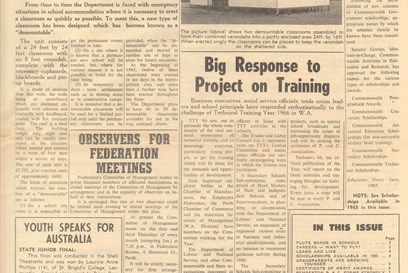
The first demountable classroom in WA
An answer to growing school populations, the first demountable classroom was installed at Redcliffe Primary School in an Education Department pilot program, with a feature included in the WA Parent & Citizen magazine. The transportable classrooms were rolled out broadly the following year.
-
1963
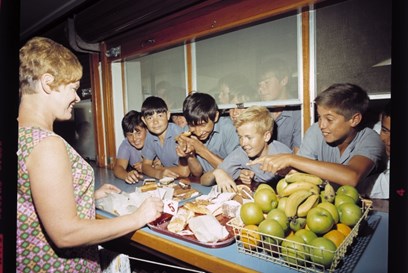
Good nutrition and canteen management a focus
The Federation’s Canteens Co-ordinating Committee, with the Education and Health Departments, developed a nutrition policy for all school canteens and published a Handbook for High School Canteens.
-
1961
Children supervising children at road crossings
The Federation raised concerns with the Minister for Traffic about children supervising their peers at school road crossings and was advised that traffic booms would only be installed where requested and where students were deemed capable of operating them.
-
1952
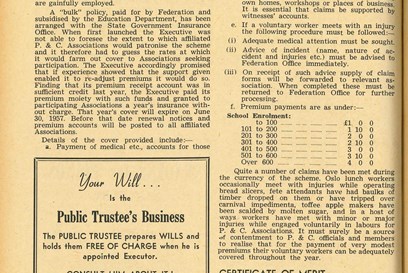
The catalyst for Voluntary Workers’ Insurance
The serious injury of a P&C volunteer who found themselves without support as they took months to recover sparked the push from many P&Cs for the establishment of an insurance scheme for volunteers. The Federation responded quickly, by 1952 negotiating an insurance scheme via the State Insurance Office, to cover the costs of injuries suffered by voluntary workers or students at the school. The Federation would pay an annual premium of £400, with half subsidised by the State Government, guaranteeing all subscribing affiliates insurance cover for approximately £1 per Association.
-
1952
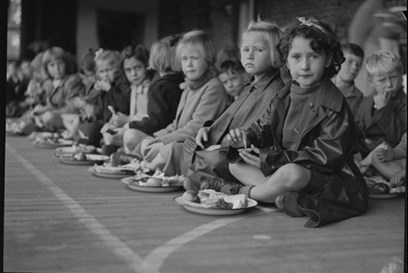
Olso lunches
The Federation acknowledged the work of parents and teachers in providing ‘Oslo lunches’ for students. Launched as a trial in WA in 1944 as a measure to promote good nutrition during wartime food rationing, a salad sandwich on wholemeal bread, a bottle of milk and a piece of fruit was provided to children for lunch and results showed that these children were healthier. Mount Hawthorn Primary School was one of the first to join the program, with 60 mothers recruited to help make the lunches.
-
1951
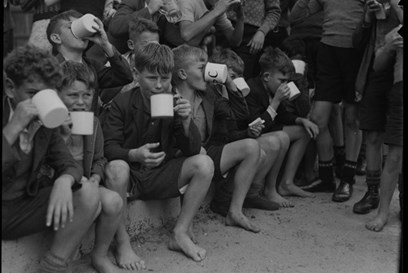
Free milk flows for students
In July, Western Australian school children drank the first free daily milk supplied under the Commonwealth’s State Grants (Milk for School Children) Act, following an astounding quarter century of campaigning by the Federation and child-focused organisations.
-
1952

The catalyst for Voluntary Workers’ Insurance
The serious injury of a P&C volunteer who found themselves without support as they took months to recover sparked the push from many P&Cs for the establishment of an insurance scheme for volunteers. The Federation responded quickly, by 1952 negotiating an insurance scheme via the State Insurance Office, to cover the costs of injuries suffered by voluntary workers or students at the school. The Federation would pay an annual premium of £400, with half subsidised by the State Government, guaranteeing all subscribing affiliates insurance cover for approximately £1 per Association.
-
1950
Equality in the spotlight
Palmyra, Yuna, Mt Lawley-Inglewood and Denmark P&Cs made joint recommendations to lobby for equal pay for male and female teachers and to have conditions penalising women teachers due to marriage abolished.
-
1954
Associations reach 400
After her election in 1921, Miss Hooton remained in office until 1954. During this period of 33 years, the Federation (as the State body soon came to be called) grew steadily to a membership of nearly 400 branches (by now called associations).
During the same period, great progress was made towards the accomplishment of aims enunciated at the first annual conference. Examples of these achievements are government subsidies towards purchases of equipment, school medical and dental services, free milk for school children and special film programs.
The Federation was represented on the Good Neighbour Council, the Visual Education Advisory Committee, the National Safety Council, the Health Education Council and other organisations which included the welfare of children in their aims.
-
1956
P&C response to the Polio epidemic
P&C Associations held meetings to disseminate information on Polio and its effects, the Salk Polio vaccine and plans for the immunisation rollout.
-
1949
A sex education focus
The Federation began delivering lectures for parents to help teach sex education to their children - covering physical, moral and spiritual subjects. Delivered by doctors, psychiatric workers and a clergyman, the lectures were wildly popular, hosted by P&Cs at 40 schools throughout the next three years.
-
1948
A push for free radio in schools
The Federation lobbied the State Government for free wireless (radio) licenses for all schools, as an extension to the Federal Government’s free radio provision for schools with less than 50 students. Minister for Education John Tonkin committed to take up the matter with the Federal Government.
-
1945
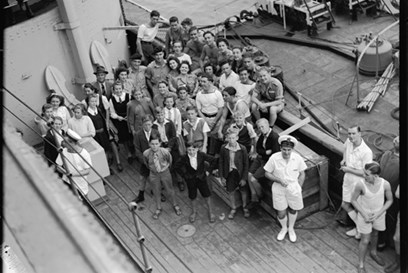
Revival of the Federation requested
More than 40 Associations wrote to the Federation enquiring about its revival. Although they did not want to hinder the war effort, P&Cs were anxious to ensure continuity of their Associations.
Federation minutes from May 1945 state “By the affiliation of all P&C Associations we believe we can compel both Federal and State Governments to accept the responsibility in respect of education. With strong unified organisation we can help our schools and all our children and the times call for just that.” -
1941
A break for World War 2
Federation records ceased due to World War II.
-
1940
A wartime Christmas treat
Carnarvon School P&C provided a Christmas dinner and gifts for students, noting in the Northern Times newspaper on 7 November, “Father Christmas hopes to be able to fly sufficiently high to escape the Nazi bombers...”
-
1936
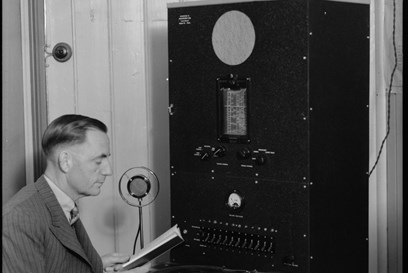
First school PA system installed
The first Public Address (PA) system in a WA school was installed at Kalgoorlie Central School, funded by the P&C.
-
1933
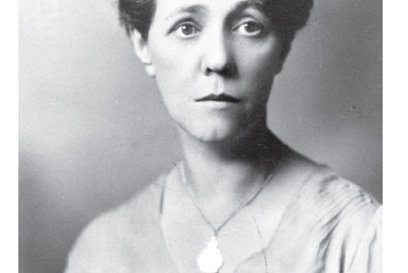
The first female President
The Federation’s first female President, State Member of Parliament Mary Alice (May) Holman was elected. May was the first woman in the Labor Party, and the second woman, after Edith Cowan, to become a parliamentarian. She was elected to the seat of Forrest in the Western Australian Legislative Assembly in 1925.
-
1932
Depression times heeded
The Federation moved a motion to ‘deplore the economic conditions at present existing and dread their effect on the rising generation.’
-
1931
Concerns of overcrowding at schools
The Federation’s Conference moved a motion protesting overcrowding at schools, citing classes being held in corridors at various schools and an example of four teachers to 198 students at North Maylands school. The Federation appealed to its affiliates to provide examples of overcrowding at their schools.
-
1928
Heavy schoolbags a concern
The Federation lamented research revealing the ‘astonishing’ weight of students’ leather attaché cases (now school bags), which could amount to as much as a fifth (secondary school) or sixth (primary school) of a child’s body weight and opined that this was contributing to the growing problem of ‘drooping shoulder.’ The issue of school bags remains in WACSSO’s policy to this day!
-
1928
P&Cs included in the Education Act
The Education Act 1928 reformed the administrative structure of the Education Department and reaffirmed the establishment of Parents and Citizens’ Associations.
-
1926
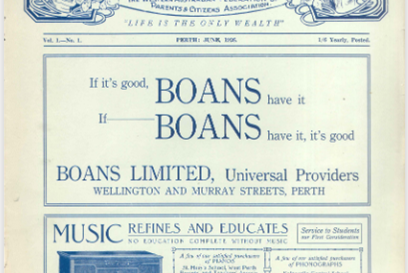
The Federation release their first magazine
The first edition of the Parents & Citizens Broadcaster is released in June of 1926.
-
1926
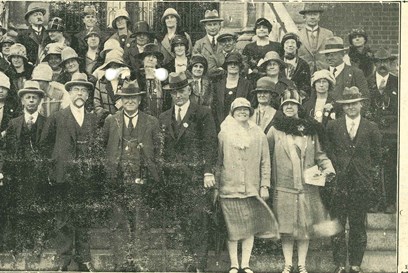
Delegates of the fourth Federation Conference
-
1923
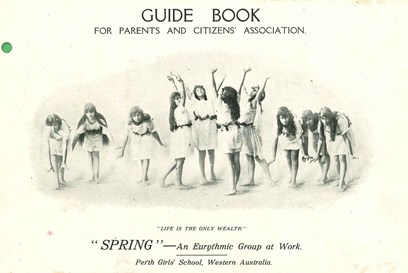
The first P&C Guide Book is published
The Federation published its first Guide Book for P&Cs, which included suggested rules and activities for Associations, friendly hints to members and the Constitution of the Federation.
-
1922
Boards abolished
The Act of Parliament which abolished District Boards also authorised the creation of Parents and Citizens' Associations. However, the function of which was to be virtually limited to fund-raising.
The Education Department had encouraged the formation of associations of parents and teachers for many years before 1922. Unlike the now defunct Boards, each of which had to cover an entire educational district, these associations were attached to individual schools.
-
1922
P&Cs recognised in legislation
P&Cs were recognised in the Public Education Acts Amendment Act, 1922. They were to “…promote the interests and efficiency of every Government school in the locality in co-operation with the teaching staff, and to assist the teaching staff in all its relations to the community.”
WA’s first Director of Education Cecil Andrews said of P&Cs: “Such associations already in existence in connection with several schools are doing a good deal of help. They may do much in the way of bringing the schools more in touch with the community and of making provision for what the Department cannot supply.” -
1921
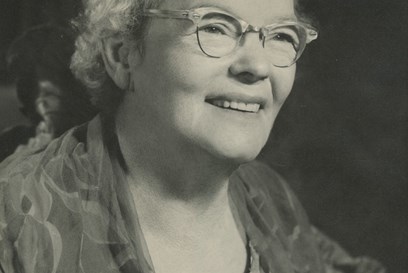
The Federation is established
The Western Australian Federation of Parents and Citizens (The Federation), was established by Harriet (Ettie) Hooton at the organisation’s inaugural conference on 13 August. Sixty delegates from 38 P&C Associations attended, along with the Minister for Education. School buildings, learning, larger playgrounds, the need for library books, and children’s health were discussed.
-
1920
Education Department calls for more Parents & Citizens' associations
The Education Department's Annual report for 1920 hoped that Parents and Citizens’ associations would soon be found in connection with most schools. "Pianos, pictures, library books, magic lanterns, and gymnastic apparatus" were among the equipment being provided by the associations.
These associations were obviously a product of the times. One of the world's smallest populations was rapidly spreading over one of the largest land areas. Governmental authorities shouldered the tremendous burden of providing roads, railways, water supplies and other services. Yet parents naturally wanted the best possible education for their children.
-
1919
'Parents' and 'Citizens' associations are formed
The Education Department's Annual report for 1919 observed that "Parents' and Citizens' Associations have been formed during the last year in connection with many of the schools … (and) the number of these Associations is increasing rapidly". It commended the associations for "promoting the welfare and efficiency of the local schools in many directions, instead of leaving everything to the Government". It said the benefit to the children was obvious, the encouragement to the teachers was great, and schools were becoming "valuable social community-centres.”
-
1916
First association formed in Toodyay
The first association to be formed may have been at Toodyay in 1916 or 1917. The August 1919 Education Circular mentions one at the Buckland Hill State School (Mosman Park) which was "in active operation" and was expected to "have a far-reaching effect on the attitude of parents towards the State school in their midst".
"The citizens of Buckland Hill", it went on, "have realised that it is just as much their duty as that of the teachers to see that the children are instructed in attractively decorated class-rooms and have a playground." The Circular notes with evident satisfaction that, though the Association had been in existence for only two months, "the improvements to the school are worth 35 pounds".
-
1913
District boards face uncertainty
The District boards were now facing an uncertain situation. On one hand, legislation had made them almost powerless. On the other hand, their occasional attempts at exerting some influence were often met with hostility from teachers. At the Teachers' Union annual conferences of 1913 and 1915, calls were made for the boards to be done away with.
-
1893
Education Department created
In 1893, when the Education Department was created, the boards were weakened still further. Deprived of power to make by-laws, and of authority to appoint and dismiss teachers, they were left with only an instruction to "inspect and supervise" the schools in their district and to make recommendations to the newly-appointed Minister for Education.
-
1871
Education Act passed
Western Australia's first Education Act was passed in 1871. Once again, the Government announced its desire to "encourage voluntary efforts in support of the schools." In each educational district, a district board consisting of five elected members was established.
These boards had enviable powers. They were to inspect and supervise schools, and - subject to the Central Board's approval - could appoint and even dismiss teachers. Unfortunately, attendance fell off and interest in board membership declined. There was dissatisfaction with the amount of money allowed for minor school repairs, and the enforcement of school attendance placed a heavy burden on board members. The Board's appointment of teachers was apparently another cause of friction, and teachers often resented board members' inspection of their work.
-
1847
State school system begins
The State school system officially began with the creation of a Board of Education in 1847. Community involvement was envisaged from the start. The Board's first report advocated, rather ominously, that as a rule "the establishment of a school in any particular district should in some degree depend upon the exertions and sacrifices which the inhabitants are willing to make."
The money allocated to education was not to be falsely regarded as "a branch of public charity". Nevertheless, the local committees which were to be formed wherever schools were established had very little power. Their responsibility was mainly that (foreshadowed in the extract above) of fund-raising. -
1830
First school established
In 1830, Perth's first school was established by the government in a church building.